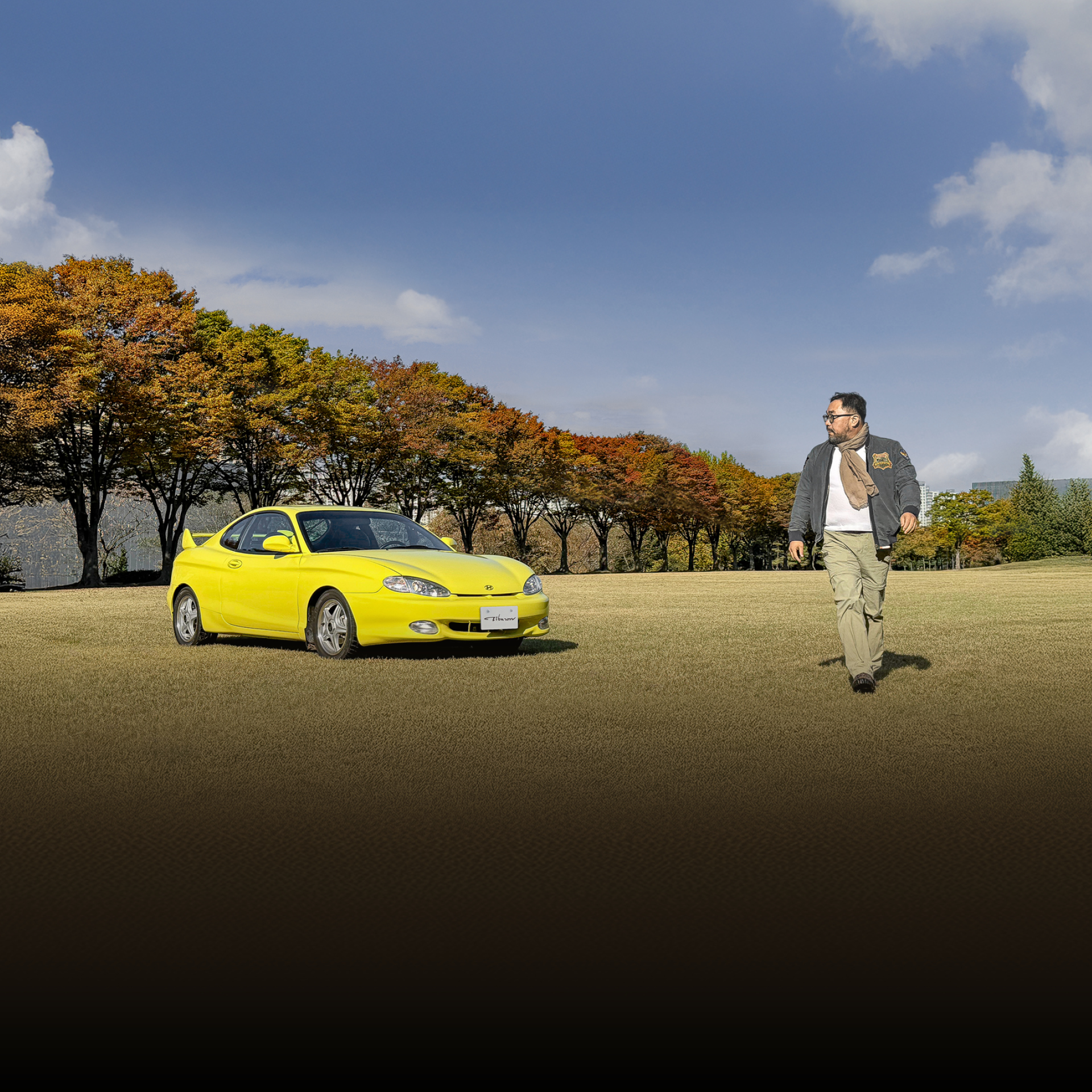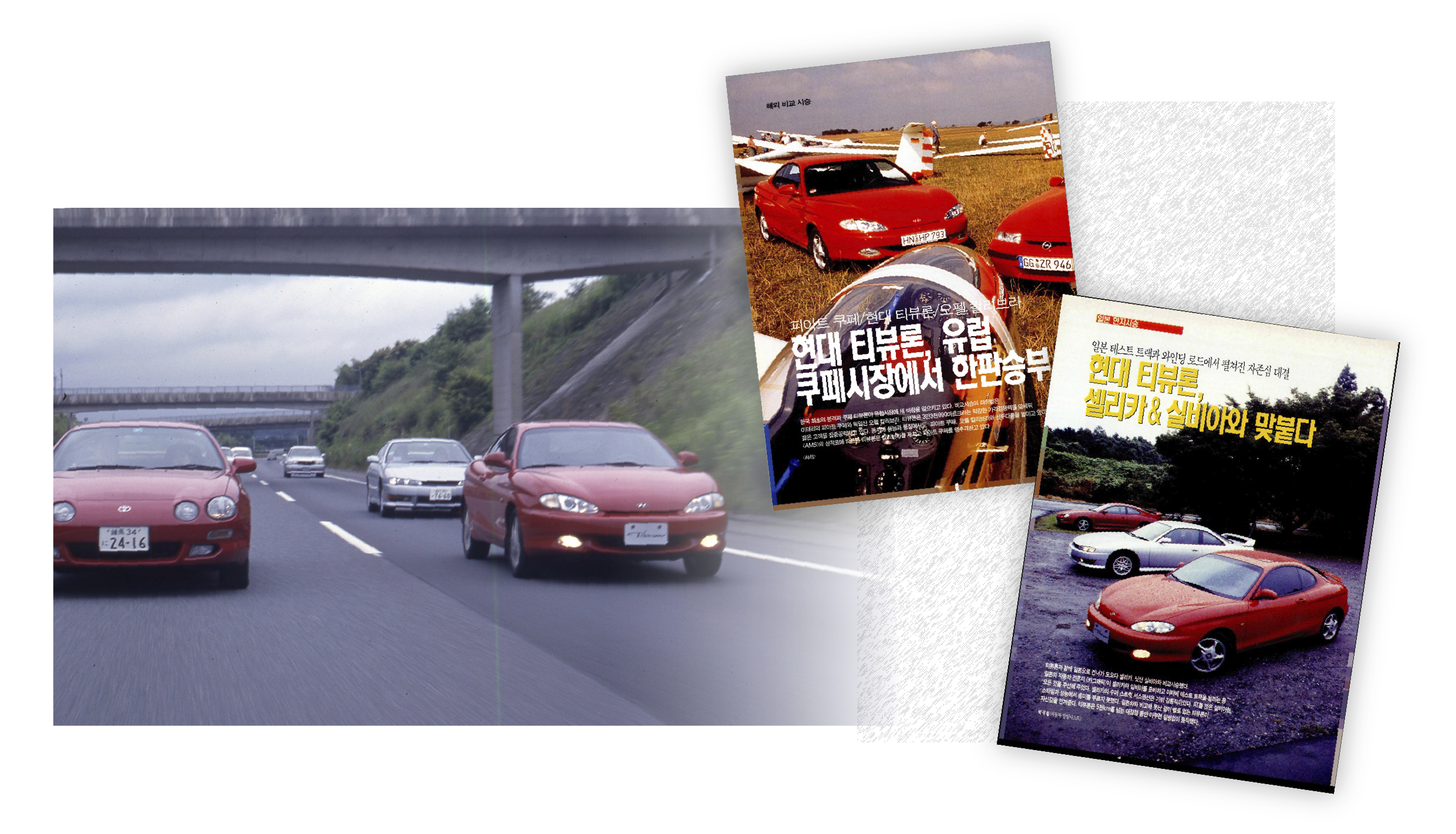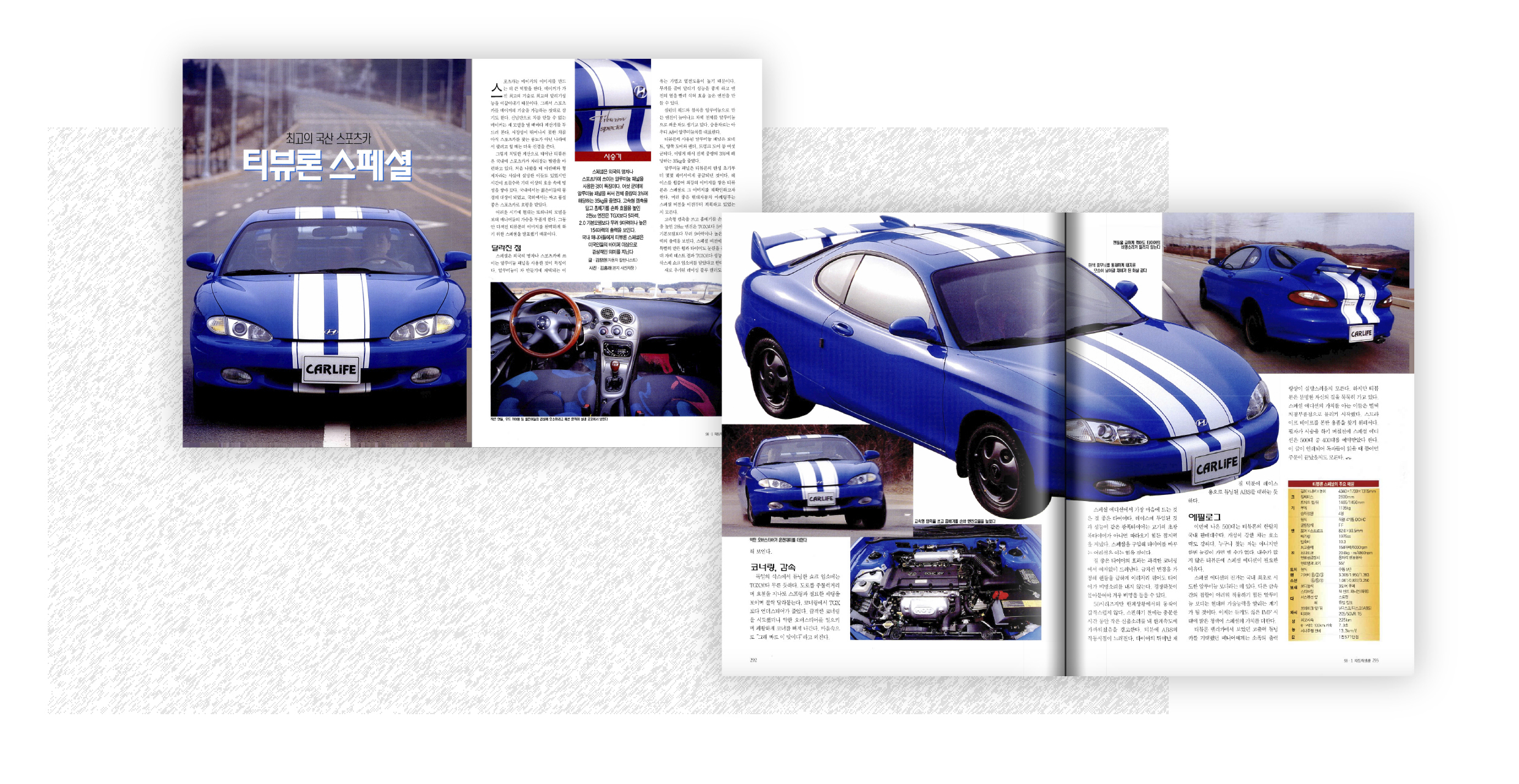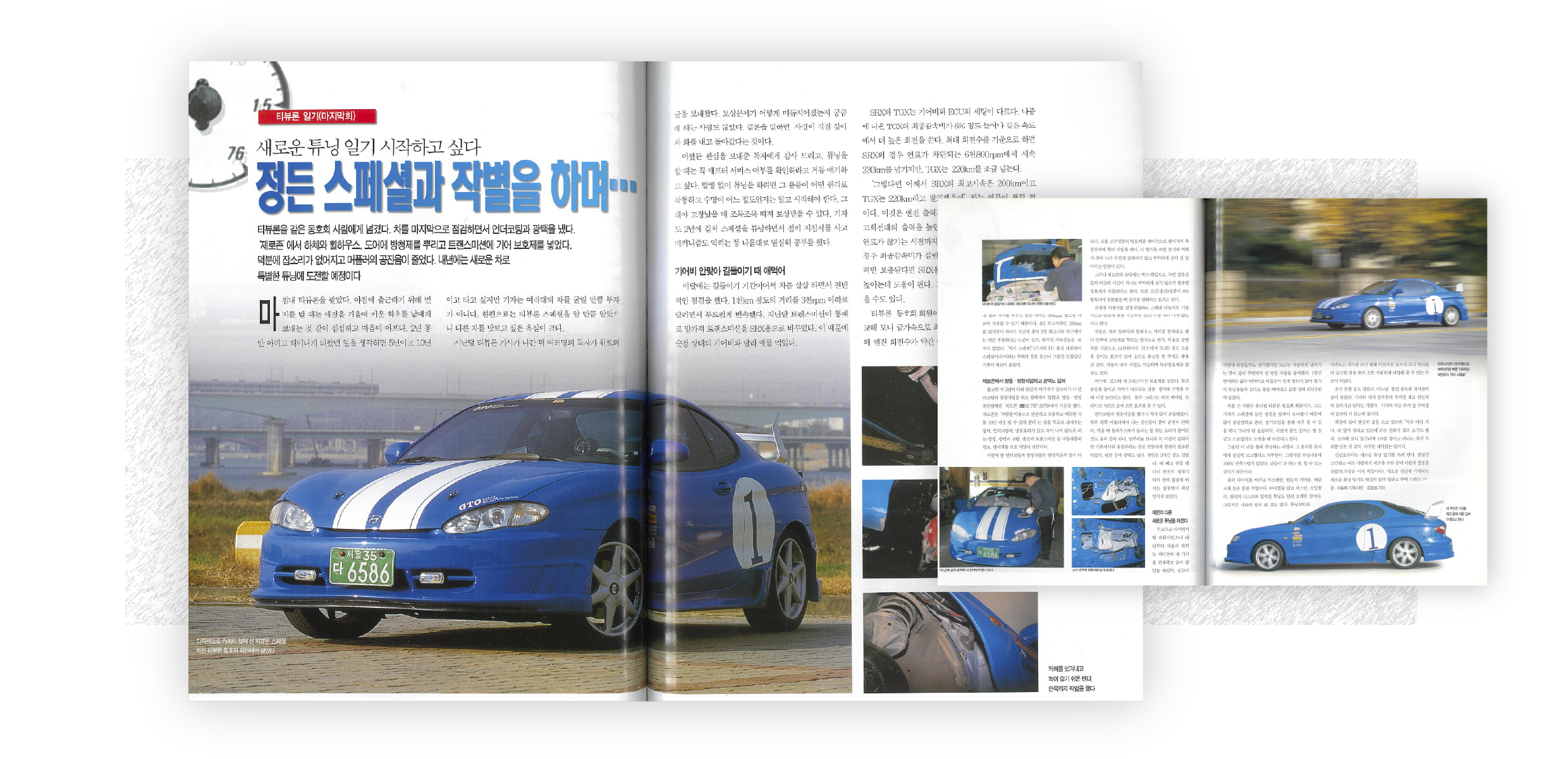




Classic cars are more than machines—they’re vessels for personal memories. For me, the Hyundai Tiburon is a car I can’t view objectively. Its debut in 1996 coincided with the start of my career as an automotive journalist, and in late 1997, I bought a Tiburon Special. It was this car that propelled me into the world of automotive writing and shaped my path as a columnist. So yes, this review is unapologetically subjective.
Before delving into the Tiburon, it’s important to understand the backdrop of South Korea’s automotive culture. In the 1980s, cars began to proliferate across the country. According to data from the Ministry of Land, Infrastructure, and Transport, the number of registered vehicles in South Korea grew tenfold, from 530,000 in 1980 to 5.23 million by 1992. For enthusiasts like me, this was thrilling, but access to information about cars was limited to monthly automotive magazines.

In college, I once stayed up all night translating an article about a red sports car from an American auto magazine, using a dictionary for every word. Inspired by articles on driving techniques, I’d sneak out at night to practice driving on winding roads with my parents’ car. For me, these magazines were both textbooks and entertainment—essential guides to my budding love for cars.
When the Hyundai Tiburon was launched in April 1996, it flooded South Korea’s auto magazines with reviews, developer interviews, performance tests, and comparisons with imported sports cars. The buzz was overwhelmingly positive, with articles frequently touting the Tiburon’s edge in performance. This constant praise only fueled my desire to own one.

At the time, test-driving a new car wasn’t easy unless you personally knew an owner. I devoured every Tiburon article I could find, reading them repeatedly. Then, I came across a job posting for automotive journalists at Car Life and Car Vision, two of South Korea’s most influential auto magazines. Becoming an auto journalist felt like the perfect way to gain access to cars like the Tiburon. In a sense, the Tiburon guided me to my career.

The Tiburon’s debut wasn’t just a car launch—it was a cultural phenomenon. As one of the first cars capable of serious performance driving, it dominated racetracks and fueled a national interest in motorsports. The Tiburon also ignited a performance tuning boom, transforming what had been a superficial styling trend into a legitimate industry. Auto magazines adapted to this shift, introducing tuning sections and even publishing specialized tuning magazines.

At Car Vision, where I worked, we began featuring a tuning section in mid-1997, and I was assigned to cover stories about tuned cars. The challenge was differentiation. News about newly customized Tiburons from various tuning shops often appeared identically across multiple auto magazines. I realized I needed a unique angle to captivate readers. That’s when I heard about the release of the Tiburon Special in December 1997. This limited edition of just 500 units was created to meet homologation requirements for motorsport participation, featuring specifications similar to race cars. It also commemorated Hyundai’s 30th anniversary, making it a landmark model in the brand’s history.

With the release of the Tiburon Special, I decided to take a bold step: "Why not modify it monthly and document the results?" Without hesitation, I became the first owner of a Tiburon Special in Korea. Over the next two years, I chronicled my experiences in a series titled Tiburon Diary, which became a hit with readers. Each month, I tested modifications like new wheels, tires, shocks, and suspension springs, measuring lap times at Yongin Speedway. I experimented with performance upgrades, including open intake filters, high-duration camshafts, and custom exhaust systems, and used a chassis dynamometer to monitor changes in power output. By combining objective data with my personal impressions, I offered readers a detailed, evolving look at the Tiburon’s transformation. This mix of hard facts and storytelling made the series incredibly popular.
*High-Duration Camshaft: A camshaft designed to alter valve timing and lift for improved air intake. This modification adjusts the torque band or enhances high-RPM output for better engine performance.
For many teenagers at the time, the Tiburon was a dream car - and writing about it while driving one made me their hero. Years later, at an auto event, a junior journalist told me, “Your Tiburon Diary inspired me to become an automotive journalist.” While flattered, I couldn’t help but feel guilty, as if I had led a bright young mind into a tough industry.

The 1997 Asian financial crisis, known as the IMF crisis in South Korea, made car ownership more difficult. Gas prices doubled, from 600KRW to 1200KRW per liter, and companies cut salaries and expenses. Despite this, the joy of driving my Tiburon never waned—whether it was late-night drives home on empty roads, scenic weekend outings, or the satisfying sound of the catalytic converter cooling after a spirited drive.
Eventually, I parted ways with the Tiburon, longing for a rear-wheel-drive experience. Watching Hyundai’s restoration of the Tiburon decades later brought back a flood of emotions. Being part of the restoration process and driving the car again felt like a reunion with an old friend.

Opening the coupe’s signature long door, I bent down, slipped my legs inside, and settled into the semi-bucket seat. With my right hand, I reached for the slide lever beneath the seat, adjusted the rail position, and found the perfect fit. Turning the key, the engine roared to life. I gently nudged the gear lever forward into first gear, delicately balancing the clutch and accelerator as the car began to move. As the engine emitted a satisfying roar, I seamlessly operated the clutch and shifted gears. Despite it being 25 years since I last drove a Tiburon, every movement felt fast and natural. During those two years of owning and driving the Tiburon daily, its operation had become second nature. My body instinctively remembered every motion, surprising even myself.

From the driver’s seat, the low hood and prominently flared fenders create a sporty aesthetic that remains striking even by today’s standards. The Tiburon’s muscular exterior design flows seamlessly into the interior through smooth curves. The layout, from the door trim to the crash pad, wraps around the driver, embodying the feel of a true driver-focused sports car. The front seats, with their high and wide shoulder bolsters, still look impressive and provide a snug fit. However, the rear seats tell a different story. For adult passengers, the limited headroom causes them to bump against the tailgate glass—an uncomfortable reminder of the many times I squeezed friends into the back with the excuse, “It’s a sports car. What do you expect?” That lingering memory always comes with a sense of guilt.

The Tiburon featured Hyundai's second in-house engine design, the 2.0L Beta engine. This naturally aspirated engine was a long-stroke design, with a cylinder bore of 82.0 mm and a stroke of 93.5 mm. This configuration delivered substantial torque at low RPMs, making everyday driving not only manageable but genuinely enjoyable. Unlike today’s turbocharged engines with their artificial "popcorn" exhaust notes, the Beta engine produced a pure, natural sound that rose in proportion to engine speed—a rich, unfiltered tone that encapsulated the spirit of a true sports car.
The Tiburon’s 5-speed manual transmission added to the driving experience, offering a hands-on thrill that modern 6-speed manuals sometimes miss. Its short gear ratios emphasized quick acceleration in the first three gears, while the fourth and fifth gears were tuned for comfortable cruising. At 100 km/h (62 mph) in fifth gear, the engine maintained a steady 3,000 RPM, allowing for smooth power delivery with just a tap of the accelerator. In particular, the Tiburon TGX and Special models stood out for their ability to hit 100 km/h in third gear during hard acceleration. This demanded quick shifting skills from drivers and contributed to the Tiburon’s reputation as a tuner’s favorite. Many owners modified the engine to raise its RPM limits, taking full advantage of its performance potential.

I took the restored Tiburon to a familiar mountain pass, a route I’ve driven countless times in rear-wheel-drive sports cars with over 300 horsepower. Revisiting the same road 25 years later in the Tiburon brought a smile to my face. With less than 150 horsepower, the Tiburon’s appeal lay not in brute force but in its lightweight construction—tipping the scales at just over 1,100kg of curb weight—and its short-gear manual transmission. These traits gave the car a lively, honest feel that made it incredibly engaging to drive. Unlike modern cars packed with electronic aids and physics-defying systems, the Tiburon offered raw, unfiltered driving pleasure. It was a nostalgic moment, rediscovering the very driving dynamics that had made the Tiburon so memorable in the first place.

As part of its restoration, the Tiburon underwent a bold transformation, switching from its original black color to the TGX-exclusive shade of Funny Lemon. The bright lemon-yellow coupe turned heads everywhere it went, drawing admiration and nostalgia alike. A video documenting the restoration on Hyundai Motor Group’s official YouTube channel attracted nearly 1,000 comments from fans sharing their personal memories of Hyundai’s past vehicles. Reading these heartfelt stories was a deeply moving experience. And this nostalgia isn’t unique to South Korea; Around the world, countless enthusiasts hold fond memories of the Tiburon and other classic Hyundai cars. It’s no wonder that most major automakers dedicate efforts to restoring and preserving their historic vehicles; Such efforts foster lasting emotional bonds between brands and their customers.

As cars become fully electrified and autonomous driving reaches its peak, personal connections and positive experiences with a brand will increasingly influence purchasing decisions. Cars, after all, are more than transportation—they’re repositories of accumulated memories, reflections of their owners’ lives. Hyundai recently celebrated its 100 millionth vehicle produced and is now gearing up for its 60th anniversary in just three years. By restoring and sharing its heritage, Hyundai has the opportunity to touch the lives of even more people worldwide, strengthening its cultural impact.
By Lee Dong-hee (Automotive Columnist & Consultant)
Lee Dong-hee began his career as an automotive journalist at Car Life magazine. He gained recognition with popular articles like Tiburon Diary and The Restoration of a 1969 Land Rover. Later, he worked in sales training and product planning for Chrysler Korea and Jaguar Land Rover Korea, eventually becoming a dealership manager. Today, he combines hands-on industry experience and analytical expertise as a columnist and consultant.
Photography by Choi Dae-il